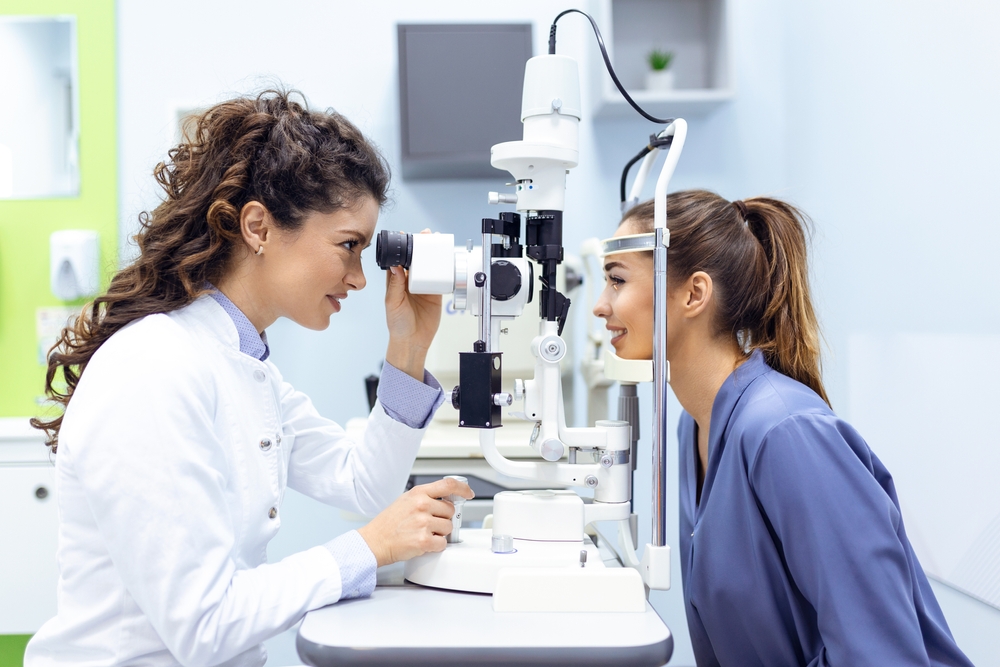All Categories
Featured
The health of our eyes plays a vital function in our total well-being. Many individuals neglect eye treatment up until issues emerge. With the raising use modern technology, direct exposure to environmental aspects, and the natural aging process, taking aggressive steps to safeguard your eyes is essential. In this blog, we'll review some of one of the most usual eye conditions and practical ideas on just how to avoid them, guaranteeing you keep optimum vision throughout your life.

- Myopia (Near-Sightedness):
Myopia, or near-sightedness, is a problem where distant objects appear blurry while neighboring objects stay clear. It occurs when the eye is as well long, or the cornea is as well bent, creating light to focus in front of the retina. Myopia prevails in children and young grownups, and its occurrence has boosted because of enhanced display time.
Avoidance:
Limit screen time and urge regular breaks to stay clear of eye pressure. Advertise outside tasks, as studies recommend that hanging out outdoors can lower the threat of nearsightedness advancement in kids. If you are diagnosed with myopia, wearing corrective lenses such as glasses or contact lenses can aid manage the problem. 2. Hyperopia (Far-Sightedness):
Hyperopia, or far-sightedness, is the opposite of myopia. It occurs when distant objects are seen clearly, yet close items show up fuzzy. Hyperopia occurs when the eye is also short or the cornea is also level, creating light to focus behind the retina.
Prevention:
Regular eye tests can help find hyperopia early. Similar to nearsightedness, rehabilitative lenses (glasses or contacts) are frequently suggested to deal with the vision. Practicing good aesthetic habits, such as preventing too much close-up work for extended periods, can likewise aid alleviate symptoms. 3. Age-Related Macular Deterioration (AMD):
AMD is a problem that impacts the macula, the part of the retina in charge of sharp main vision. This age-related illness creates fuzzy or lost vision in the center of the aesthetic area, which can make tasks like reading or recognizing faces challenging. While the precise root cause of AMD isn't fully comprehended, it's connected to aging, genetics, and environmental aspects.
Avoidance:
Secure your eyes from UV rays by wearing sunglasses that block 100% of UVA and UVB rays. Eat a diet regimen rich in antioxidants, especially those located in leafed eco-friendlies, fish, and nuts, to support retinal health. Don't smoke, as cigarette smoking is a considerable danger element for AMD. 4. Cataracts:
Cataracts develop when the lens of the eye becomes gloomy, hindering vision. This condition is most generally connected with aging yet can additionally result from excessive UV direct exposure, smoking, or particular clinical problems such as diabetes.
Prevention:
Use sunglasses with UV security to minimize UV exposure, which is a leading reason of cataracts. Stay clear of smoking, as it accelerates cataract development. Preserve a healthy and balanced diet regimen high in vitamins C and E, which have actually been shown to support eye wellness and protect against cataracts. If you have diabetics issues, it is very important to manage your blood sugar levels to decrease your risk. 5. Glaucoma:
Glaucoma describes a team of eye problems that harm the optic nerve, often because of high intraocular stress. It can trigger progressive vision loss and, if left without treatment, result in loss of sight. Glaucoma is commonly called the "silent burglar of view" because it generally creates without visible signs up until substantial damages has taken place.
Prevention:
Obtain normal eye tests, specifically if you have a family history of glaucoma, as it is genetic. Workout consistently to aid enhance blood circulation and keep healthy eye stress. If diagnosed with glaucoma, following prescribed therapies and medications is necessary to handle the problem and prevent more damages. 6. Dry Eyes:
Dry eye syndrome occurs when your eyes don't create sufficient splits, or the tears created are of bad quality. This can bring about inflammation, soreness, burning, and a gritty sensation in the eyes. Ecological elements, display time, and particular drugs can worsen dry eyes.
Avoidance:
Blink more regularly when utilizing digital gadgets to keep your eyes moist. Usage fabricated splits or lubricating eye goes down to keep your eyes hydrated. Enhance the moisture in completely dry atmospheres using a humidifier. Consume alcohol lots of water to remain moisturized and assistance tear manufacturing. 7. Conjunctivitis (Pink Eye):
Conjunctivitis, or pink eye, is an inflammation of the thin cells covering the white part of the eye. It can be triggered by bacterial or viral infections, allergies, or toxic irritants. Although it is frequently contagious, conjunctivitis is normally a light condition that resolves with correct care.
Prevention:
Laundry your hands frequently and stay clear of touching your eyes. Do not share personal products such as towels, pillows, or make-up. If you wear contact lenses, make sure to follow correct hygiene and cleaning procedures. Final Thought:
Taking proactive measures to safeguard your eyes is necessary in preventing common eye problems and keeping healthy and balanced vision. Regular eye tests, a healthy and balanced way of life, and exercising great practices like proper display use and UV security can all help maintain your eyes in leading form. By knowing potential risks and doing something about it currently, you can make sure that your vision remains clear and your eyes remain healthy and balanced for many years to find. Do not wait on eye troubles to take place-- deal with your eyes today!
Latest Posts
The Importance of Professional Gutter Installation and Upkeep
Enhancing Your Residential Property with Washington Fence
A Raised Culinary Experience